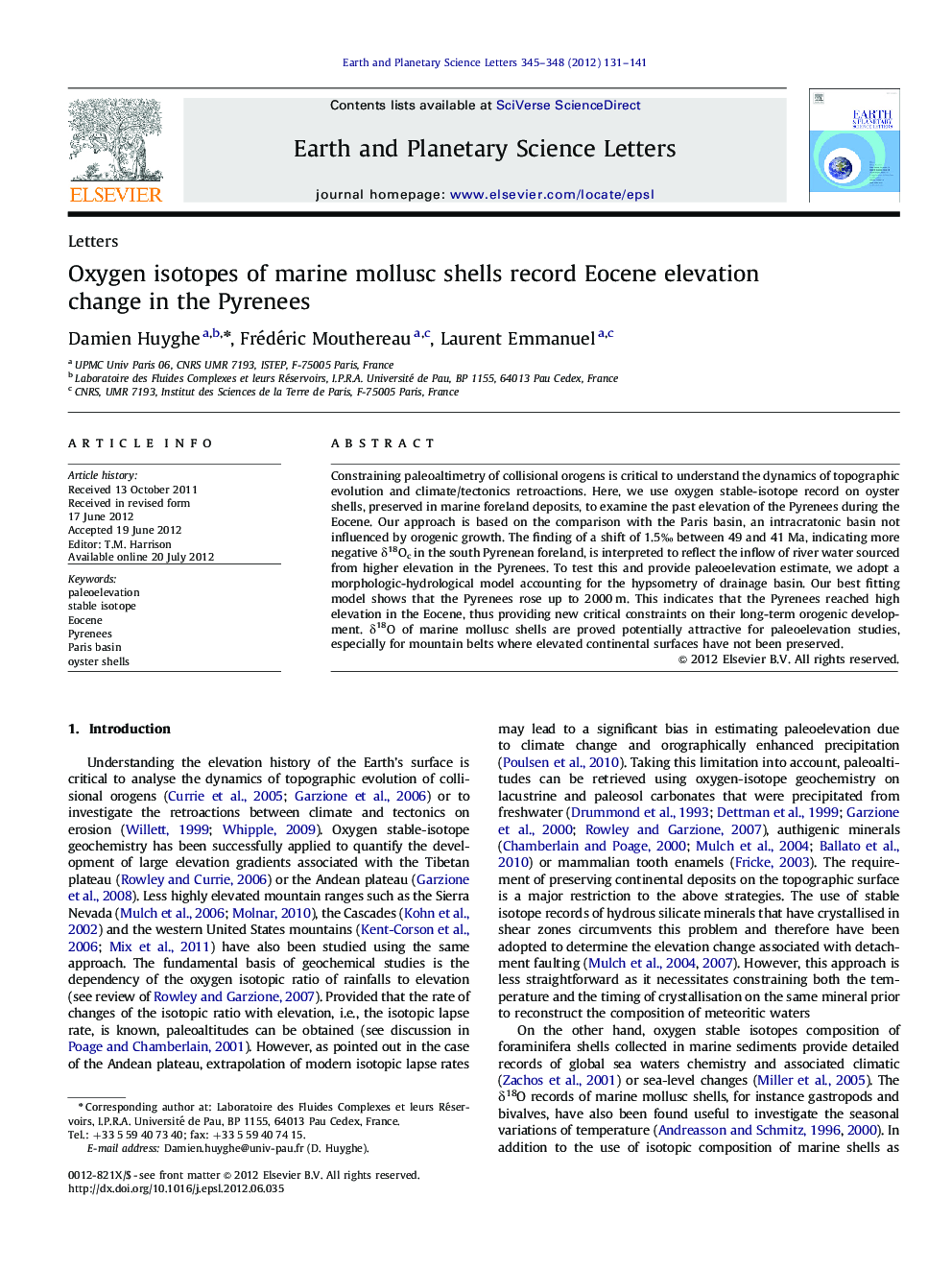| Article ID | Journal | Published Year | Pages | File Type |
|---|---|---|---|---|
| 6430579 | Earth and Planetary Science Letters | 2012 | 11 Pages |
Constraining paleoaltimetry of collisional orogens is critical to understand the dynamics of topographic evolution and climate/tectonics retroactions. Here, we use oxygen stable-isotope record on oyster shells, preserved in marine foreland deposits, to examine the past elevation of the Pyrenees during the Eocene. Our approach is based on the comparison with the Paris basin, an intracratonic basin not influenced by orogenic growth. The finding of a shift of 1.5Ⱐbetween 49 and 41 Ma, indicating more negative δ18Oc in the south Pyrenean foreland, is interpreted to reflect the inflow of river water sourced from higher elevation in the Pyrenees. To test this and provide paleoelevation estimate, we adopt a morphologic-hydrological model accounting for the hypsometry of drainage basin. Our best fitting model shows that the Pyrenees rose up to 2000 m. This indicates that the Pyrenees reached high elevation in the Eocene, thus providing new critical constraints on their long-term orogenic development. δ18O of marine mollusc shells are proved potentially attractive for paleoelevation studies, especially for mountain belts where elevated continental surfaces have not been preserved.
⺠δ18O of Eocene oyster shells records inflow of river water sourced from higher elevation in the Pyrenees. ⺠Modelling supports high elevation of the Pyrenees ca. 2000 m between 49 and 41 Ma. ⺠High elevation of the Eocene Pyrenees questions the role of subsequent morphotectonic events.
